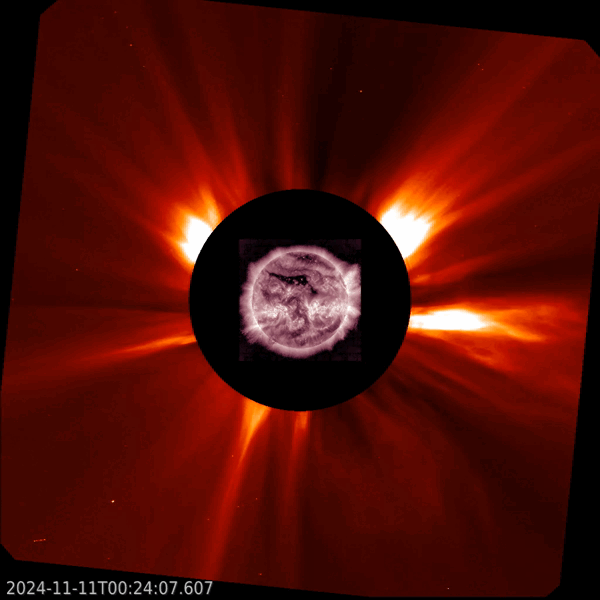Cerro Tololo (Chile) is one of the 6 observing sites of the GONG network (Global Oscillation Network Group). These stations are distributed over the Earth in such way that the Sun can continuously be observed. Originally created to do helioseismic observations (see this STCE newsitem for more info on helioseismology), the stations were also equipped with other instruments to do solar observations, amongst them an H-alpha telescope. H-alpha ("Hydrogen - alpha") is a line in the red part of the solar spectrum near 656.28 nm. It allows a good view on features in the lower chromosphere, the inner atmosphere of the Sun. Typical features that are observed are solar filaments, which are clouds of charged particles ("plasma") above the solar surface squeezed between magnetic regions of opposite magnetic polarity. Being cooler and denser than the plasma underneath and their surroundings, they appear as dark lines when seen on the solar disk and as bright blobs when seen near the solar limb (then they are called "prominences").

On 11 November shortly after UTC-noon, Cerro Tololo was able to observe an impressive filament eruption from the Sun's southern hemisphere. In H-alpha, the filament had a length of nearly 500.000 km, significantly longer than the typical Earth-Moon distance. The eruption started around 14:00UTC and lasted for several hours. The eruption can be seen in the H-alpha movie above.

Not all of the filament was gone, as can be seen in the compilation above. Also, around the same time, another filament/prominence near the southeast solar limb erupted. SDO's extreme ultraviolet (EUV ; SDO/AIA 211, see this annotated image and the clip underneath) images suggest that the prominence at the limb was connected with the big filament by a filament channel. A filament channel is thought to be the magnetic structure within which usually lies the filament plasma. However, not all filament channels are filled with filament plasma. In the case of the 11 November eruption, the presence of the filament channel can be seen when it gets activated (brightens a little bit) during the eruption.

As a result, there was only a single coronal mass ejection (CME) associated with this eruption, and deemed not earth-directed by the SIDC space weather forecaster. It is shown in the imagery underneath, combining the SOHO/LASCO C2 coronagraph white light images with the EUV images from SDO/AIA 211.






